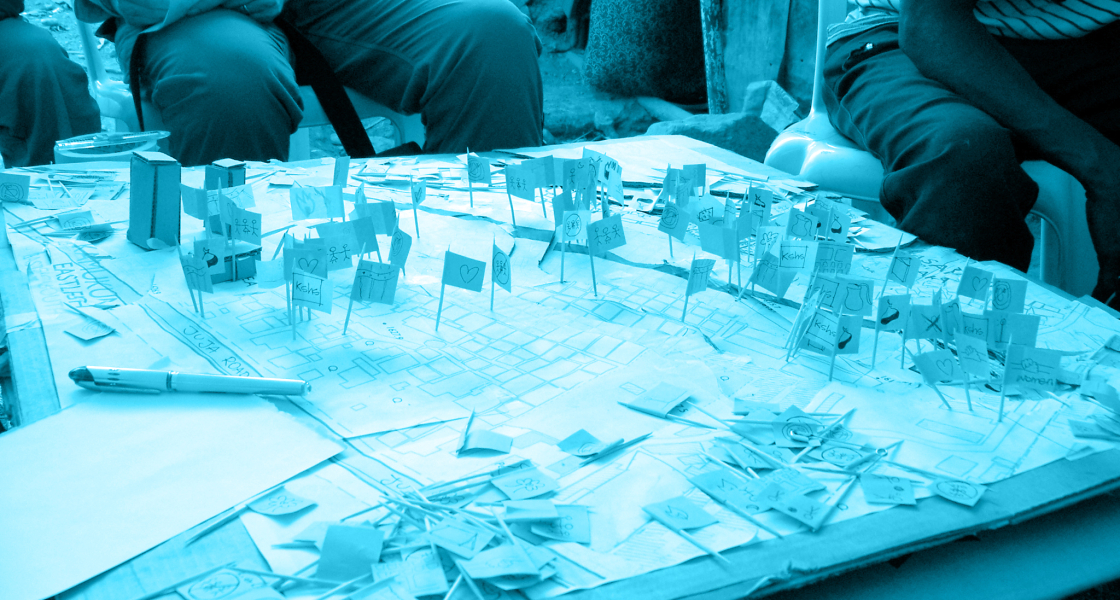A public event held around a model of the neighbourhood. pdf download
Goal: To encourage discussion about the main issues and how people envision these being solved.
Audience: A representative sample.
What you need:
– A 3D model of the neighbourhood or of a specific site that wants to be discussed (cardboard/glue/tape/scissors are required if the model is being made from scratch)
– Flags of varying colours with symbols for each issue
– Note paper
– Writing pens
– A location for the discussion to be held and flat surfaces
Description
This is a public event, using a model as a tool for discussion into the main issues of the neighbourhood and how people envision these to be solved. A 3D model of the neighbourhood is elaborated in order to facilitate the visualisation of the main issues. Small flags with symbols are allocated to each issue and colors are used to differentiate according to gender and age. The model is used as a vehicle for discussion with other residents and as a way to further unpack the issues affecting women, men and children with regards to their neighbourgood spaces and infrastructure. Coordinators should facilitate the use of the model and record the information gathered during the discussions with residents.
Ultimately, the tool can explore potentiaonal opportunities for change in the neighbourhood. Discussion groups can vary in size, with smaller groups discussing around the model or using the model as a tool to address a much larger group.
Instructions:
Instructions:
Step 1: Produce the model.
Step 2: Hold a public event (this can utilise existing community events and can follow up with the model workshop).
Step 3: Introduce the exercise and its aims and objectives it is important to highlight the main issues in the neighbourhood and potential ways that these can be solved.
Step 4: Explain the use of flags and their individual meanings, i.e. explain the meaning for individual symbols and colours with their appropriate demographic.
Step 5: Introduce an issue with its respective symbol, or have participants introduce an issue and provide a symbol respective of that.
Step 6: Lead a discussion with questions such as ‘Why is this an issue?’, ‘Does this affect other systems in the community?’ and ‘What can be done to solve this issue?’




